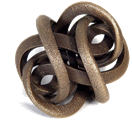Annotation:Cowslip (1): Difference between revisions
No edit summary |
Alan Snyder (talk | contribs) (Fix HTML) |
||
| Line 2: | Line 2: | ||
---- | ---- | ||
<p><font face="garamond, serif" size="4"> | <p><font face="garamond, serif" size="4"> | ||
'''COWSLIP [1]'''. Welsh, Country Dance Tune (4/4 time). D Minor. Standard tuning (fiddle). AABB. Cowslip is an herb, sometimes called a Fairy Cup. It is mentioned in Shakespeare in connection with the fairy Ariel | '''COWSLIP [1]'''. Welsh, Country Dance Tune (4/4 time). D Minor. Standard tuning (fiddle). AABB. Cowslip is an herb, sometimes called a Fairy Cup. It is mentioned in Shakespeare in connection with the fairy Ariel: | ||
<blockquote> | </font></p> | ||
<blockquote><font face="garamond, serif" size="4"><i> | |||
''Where the bee sucks, there lurk I;''<br> | ''Where the bee sucks, there lurk I;''<br> | ||
''In a Cowslip's bell I lie;''<br> | ''In a Cowslip's bell I lie;''<br> | ||
| Line 11: | Line 12: | ||
''Merrily, merrily, shall I live now''<br> | ''Merrily, merrily, shall I live now''<br> | ||
''Under the blossom that hangs on the bough.'' <br> | ''Under the blossom that hangs on the bough.'' <br> | ||
</blockquote> | </i></font></blockquote> | ||
"The fine small crimson drops in the Cowslip's chalice are said to possess the rare virtue of preserving, and even restoring, youthful bloom and beauty; for these ruddy spots are fairy favours, and therefore have enchanted value. Shakespeare says of this flower of the Fays: | <p><font face="garamond, serif" size="4"> | ||
<blockquote> | "The fine small crimson drops in the Cowslip's chalice are said to possess the rare virtue of preserving, and even restoring, youthful bloom and beauty; for these ruddy spots are fairy favours, and therefore have enchanted value." Shakespeare says of this flower of the Fays: | ||
</font></p> | |||
<blockquote><font face="garamond, serif" size="4"><i> | |||
''And I serve the Fairy Queen,''<br> | ''And I serve the Fairy Queen,''<br> | ||
''To dew her orbs upon the green:''<br> | ''To dew her orbs upon the green:''<br> | ||
| Line 19: | Line 22: | ||
''In their gold coats spots you see;''<br> | ''In their gold coats spots you see;''<br> | ||
''Those be rubies, fairy favours:''<br> | ''Those be rubies, fairy favours:''<br> | ||
''In those freckles live their saviors.'' ... [Quoted from Richard Folkard, '''Plant Lore, Legends and Lyrics''', 1884]<br> | ''In those freckles live their saviors.''</i> ... [Quoted from Richard Folkard, '''Plant Lore, Legends and Lyrics''', 1884]<br> | ||
</blockquote> | </font></blockquote> | ||
<p><font face="garamond, serif" size="4"> | |||
The melody appears in Edward Jones' '''Musical and Poetical Relicks of the Welsh Bards''' (1794, p. 179). | The melody appears in Edward Jones' '''Musical and Poetical Relicks of the Welsh Bards''' (1794, p. 179). | ||
<br> | <br> | ||
| Line 31: | Line 35: | ||
</font></p> | </font></p> | ||
<p><font face="garamond, serif" size="4"> | <p><font face="garamond, serif" size="4"> | ||
''Printed sources'': Barnes ('''English Country Dance Tunes | ''Printed sources'': | ||
Barnes ('''English Country Dance Tunes, vol. 2'''), 2005; p. 24. | |||
<br> | <br> | ||
<br> | <br> | ||
Revision as of 16:11, 1 March 2017
Back to Cowslip (1)
COWSLIP [1]. Welsh, Country Dance Tune (4/4 time). D Minor. Standard tuning (fiddle). AABB. Cowslip is an herb, sometimes called a Fairy Cup. It is mentioned in Shakespeare in connection with the fairy Ariel:
Where the bee sucks, there lurk I;
In a Cowslip's bell I lie;
There I couch when owls do cry;
On a bat's back I do fly
After summer merrily.
Merrily, merrily, shall I live now
Under the blossom that hangs on the bough.
"The fine small crimson drops in the Cowslip's chalice are said to possess the rare virtue of preserving, and even restoring, youthful bloom and beauty; for these ruddy spots are fairy favours, and therefore have enchanted value." Shakespeare says of this flower of the Fays:
And I serve the Fairy Queen,
To dew her orbs upon the green:
The Cowslips tall her pensioners be;
In their gold coats spots you see;
Those be rubies, fairy favours:
In those freckles live their saviors. ... [Quoted from Richard Folkard, Plant Lore, Legends and Lyrics, 1884]
The melody appears in Edward Jones' Musical and Poetical Relicks of the Welsh Bards (1794, p. 179).
Source for notated version:
Printed sources:
Barnes (English Country Dance Tunes, vol. 2), 2005; p. 24.
Recorded sources:
